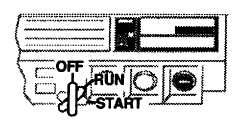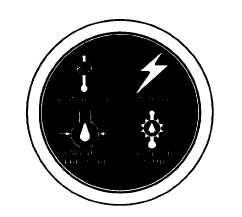| |
TM 10-3930-671-24
3.
Test the neutral start switch.
a)
Apply parking brake.
b)
Put direction control in neutral (N).
c)
Turn key switch momentarily to START
position. Check if engine starter operates.
Turn key switch OFF.
d)
Move direction control lever to FORWARD
position. Repeat Step 3.
e)
Move
control
to
REVERSE
position.
Repeat Step 3.
The engine starter should operate only with direction
control in NEUTRAL (N) position. If the starter operates
in FORWARD or REVERSE position, a) the neutral start
switch has a fault, or b) transmission shift linkage may
require adjustment.
4.
Test the anti-restart feature of the key switch.
a)
Start engine.
b)
Attempt to restart engine.
c)
Switch should not allow restart.
5.
Check fuel level and that fuel gauge is operating.
6.
Test the warning indicator lights.
To Check:
•
From OFF position, turn key switch to
RUN position to check AMMETER and
ENG OIL PRESS indicator lights.
•
Turn key switch to START position to
check WATER TEMP and TRANS OIL
TEMP indicator lights.
Hourmeter
1. Start the engine.
2. Check hourmeter for operation, with engine
running. The hourmeter is controlled by engine
oil pressure. It operates only when the engine is
running. Report any malfunction or damage.
Write the hourmeter reading on PM report
form.
Refer to Operator’s Manual for additional information on
how your truck operates.
Engine
1. Test engine starting and operating condition.
If there are engine starting and operating problems,
please refer to Part 4, Engine.
2. Test the engine exhaust system and muffler for
excessive noise level and leakage. Accelerate
the engine several times. Check the exhaust
coming from the tail pipe. The exhaust should be
invisible or clear (colorless). A stream of black
smoke generally indicates a mixture that is too
rich (excessive fuel consumption). A stream of
blue smoke generally indicates excessive oil
consumption.
3. Test the engine idle speed and no-load governed
speed adjustment. Check for obvious engine
overspeeding due to faulty engine governor
operation.
4. Listen for misfiring, excessive valve tappet noise,
and
any
unusual
engine
noise--engine
*knocking," etc. Also, listen for any unusual
noise from the transmission, charging pump, or
main hydraulic pump.
5. If necessary, perform a stall test to determine
engine performance.
Refer to Section 4. 7, RPM, Vacuum & Stall Tests.
F-46
|



